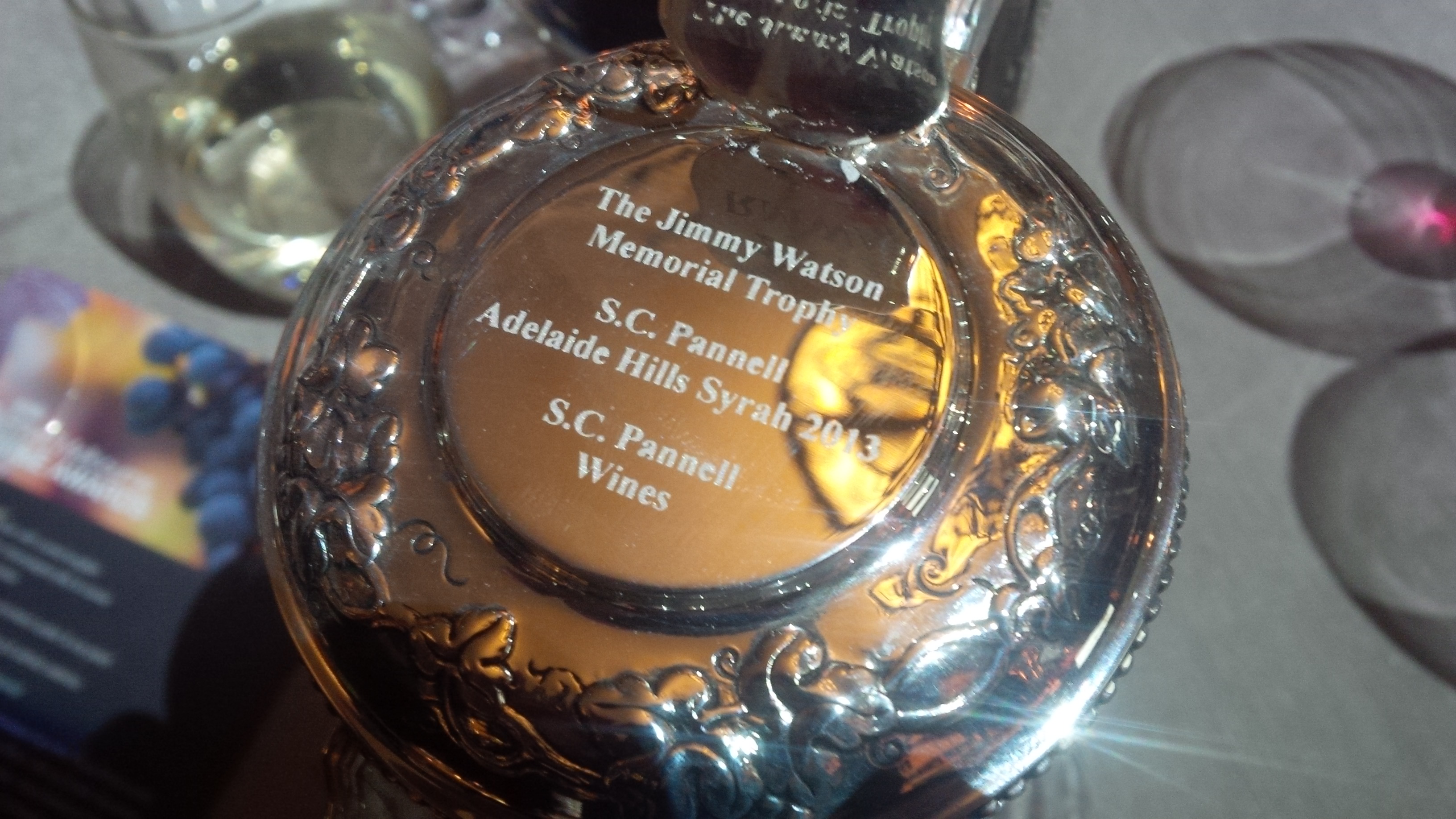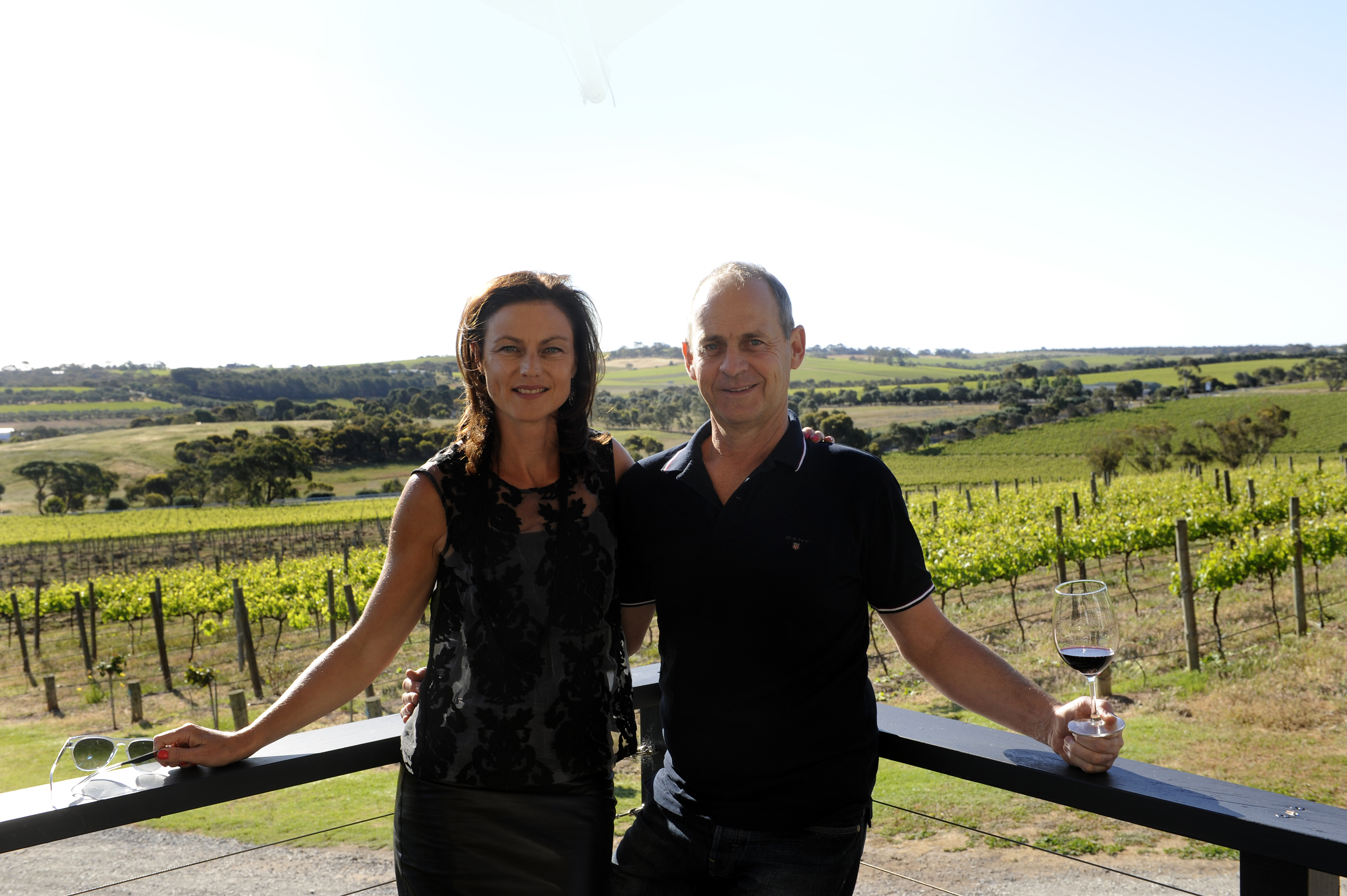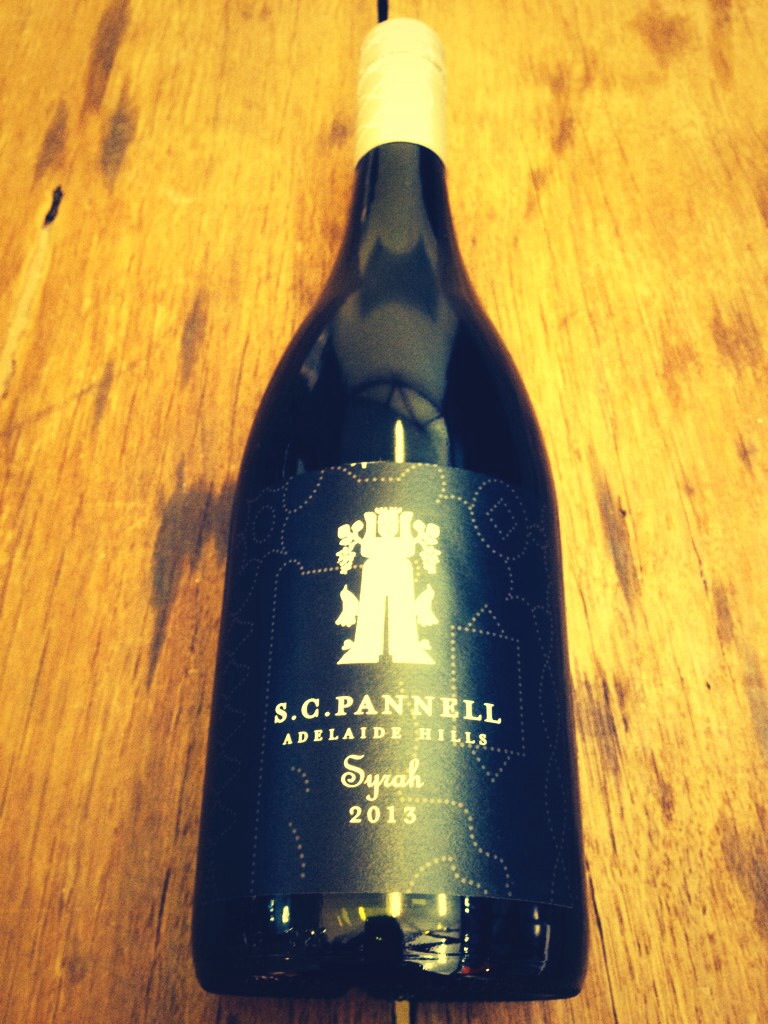by Ed Merrison

McLaren Vale winemaker Stephen Pannell has won the highest prize in Australian wine for his 2013 Adelaide Hills Syrah. It’s the second time he’s taken out the prestigious Jimmy Watson Memorial Trophy at the Royal Melbourne Wine Awards, which he first snagged 18 years ago with the 1995 Eileen Hardy Shiraz. His is the first Adelaide Hills wine to win the award and breaks a seven-year drought for South Australia, which once dominated this competition to unearth Australia’s best one- to two-year-old dry red wine.
“They’re honest, affordable wines, for people – not collectors. They’re wines that when I see them I can afford them, I buy them and I drink them.”
Stephen Pannell is talking about the reds that inspired the 2013 Adelaide Hills Syrah, which just snagged the greatest prize in the Australian vinosphere. “Some of the most inspiring wines I’ve had came from 2010 in the Northern Rhône. I’ve been absolutely obsessed with those wines. As I was drinking them I kept thinking ‘We can make that here’.”
The wine that won Pannell his second Jimmy Watson Memorial Trophy wasn’t designed to emulate the wines of Saint-Joseph and Cornas but rather to pay homage to their brilliance. “I love that duality where you have intensity, strength, depth and power on the one hand, and then you have delicacy and finesse,” he says.
Pannell uses the term “Syrah” – something some Aussies see as treacherous affectation – as a deliberate demarcation of this cool-climate style. By contrast, he also makes a McLaren Vale “Shiraz” that seeks to harness the region’s naturally sweet, rich mouthfeel and mid-palate. They’re distinct renderings of the same variety, but the philosophy is the same. “They’re made to taste like grapes and like they come from somewhere rather than tasting of how they’re made,” Pannell says.
 This has meant working the vineyard hard in able to pick earlier, elevating the role of “real grape tannins”, keeping oxygen out and trimming back on new oak. “So sweet! So gentle!” wrote Jancis Robinson of the 2011 S.C. Pannell Shiraz. “Sumptuous and beautifully balanced. Wonderfully clean and refreshing on the finish.”
This has meant working the vineyard hard in able to pick earlier, elevating the role of “real grape tannins”, keeping oxygen out and trimming back on new oak. “So sweet! So gentle!” wrote Jancis Robinson of the 2011 S.C. Pannell Shiraz. “Sumptuous and beautifully balanced. Wonderfully clean and refreshing on the finish.”
But what of the wine of the moment? Fruit for Pannell’s 2013 Syrah was grown on well-drained, granitic soil in Echunga, 410 metres above sea level in the southern Adelaide Hills. The Syrah grapes, along with 2% Viognier, were picked by hand and vinified in small, open-top fermenters, with 15 to 20% whole bunches included in the ferment. It was then aged for 12 months in large format French oak vats and puncheons, a quarter of which were new.
As one of Australia’s most respected show judges (he presides over the National Wine Show of Australia) with a palate to match, Pannell knows it takes a “huge slice of luck” to win the Jimmy Watson, but he knew the Syrah was something special from day one. “Yes, it’s lovely,” he confesses. “The 2013s have a real grapeyness about them, a presence and a freshness. In these wines the fruit looks alive. The grape doesn’t look like it was half dead before you shoved it in the bottle. I still think the 2010 Grenache was my best wine, but this Syrah is one of the top two I’ve made under this label. I suppose if I was ever going to win the Jimmy Watson, it would be with this wine.”

Pannell often jokes that he doesn’t do much to make his wines – and doesn’t know why they turn out so well. That’s mostly nonsense, of course; a combination of instinct and experience mean you couldn’t meet a more sure-footed winemaker. He was born into wine, as a member of the family that founded Moss Wood, one of Margaret River’s most exalted wineries. He’s worked vintages in Burgundy, Barolo, Bordeaux and Priorat and held domestic winemaking roles at Andrew Garrett, Seppelt and Tim Knappstein, where he was first alerted to the potential of the Adelaide Hills. That was followed by an eight-year stint at Hardys, which saw him snag that first Jimmy Watson and rise to the role of Chief Red Winemaker.
“It takes knowledge to let the wines make themselves. When I say I don’t do anything, that’s not true. Where we do more is in the vineyard. And then you’ve still got to decide when you’re going to pick, how much whole bunch to do, how much Viognier to add, when to press, when to rack, what temperature to ferment at. There’s a lot of decisions.”
He’s developed the knack of getting those decisions right – and in a sense the Jimmy Watson is a vindication of the hardest one of all: the move to strike out under his own name, launching S.C. Pannell as a “virtual winery” in 2004.

The past decade has seen its fair share of “hard days and a lot of self-examination”. But the purpose has always been clear: an honest translation of grape and place – be it the cool slopes of Adelaide Hills or the warm, Mediterranean climate of Pannell’s McLaren Vale home. He’s one those surprisingly rare winemakers that talks like a winelover, drinks widely and avidly enjoys his own wine. Those traits have helped him chase styles that suit the way Australians live and the food we eat.
As well as an enduring love of McLaren Vale staples Grenache and Shiraz, this has stretched to an affection for Nebbiolo in the Adelaide Hills and Tempranillo and Touriga Nacional from the Fleurieu Peninsula. His faith has paid off, with the 2012 Tempranillo Touriga winning Best Red Blend at last year’s Royal Melbourne Wine Awards. “Touriga’s always really interesting,” says Pannell. “For me it’s probably the third most important variety in McLaren Vale after Shiraz and Grenache.”
The Jimmy Watson win tops off a dream run for Pannell, who followed up the purchase of a long-coveted vineyard with his acquisition in June of a new cellar door and winery in the heart of his beloved McLaren Vale.
“I’m trying to contain the excitement,” says Pannell. “You’re lucky to win just once and I still look at that old medallion and think ‘Wow! That was me’. But to do it with my own label is just incredible.”
In the old days at Hardys, he was making wines to win awards. The difference now is he’s making wines that – just like those great Northern Rhônes from 2010 – he loves to drink. It seems he’s not alone on that count.
“I’ve invested a lot more in this than when I won with Hardys. When we first started doing this we couldn’t have imagined it; it was impossible. That brings an immense amount of satisfaction. And it’s fun. I love it – and I love that people get it now.”